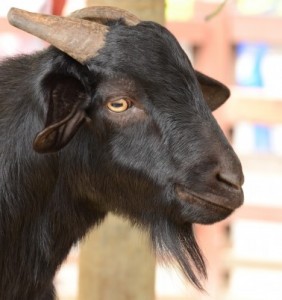 When looking to breed a pair of goats, there’s a lot to understand if you’re inexperienced. First, the proper terminology to call your farm animals should be understood. Goats have a variety of names that are used by farmers to properly explain and classify the maturity and reproductive history of the animal.
When looking to breed a pair of goats, there’s a lot to understand if you’re inexperienced. First, the proper terminology to call your farm animals should be understood. Goats have a variety of names that are used by farmers to properly explain and classify the maturity and reproductive history of the animal.
A female goat that is young or old, but has never given birth, is known to farmers as a “nanny” or “doeling”. After giving birth for the first time, the female gets a new name. That newly conferred title is “dam”. The term lets anyone, certainly someone familiar with farm animals, know that the goat has been through the birthing process and has experience of mothering.
The “nanny” gives birth to offspring that have a seemingly anthropomorphic nickname. Possibly for the unique sound they let out when excited, baby goats are called “kids”. Most people are unaware that the term “kid” was first used to refer to these animals. Long before humans began calling their young children “kids”, it was already a proper term to call a young goat.
The father of the kid and any active male sex counterpart for the nanny is known as a “buck” or a “billy”. Only the healthy, breeding capable males are known by those names. A male that is sterile, likely having been castrated for identified defects, is known as a “wether”. The wethers will never be able to reproduce and generally are kept only either for protection of a herd or for their meat.
When a nanny and a buck are ready to mate, there will be plenty of active signs given by both sexes. A doe will be seen wagging her tail extremely hard back and forth, vigorously signalling to the males that she is ready. This hardcore wagging of the tail is known as “flagging”, a clear indication a “lady” is in heat. Also, a doeling may make more noise than normally heard. The sounds will range from short, constantly repeated blurts to extended-length calls for the billy of her dreams. Once a capable male is spotted, the female goat will strut in circles, “parading” back and forth in front of the male. If that does not work, the nanny might start acting like a buck, mounting any of the herd as if attempting to demonstrate what the boys should be doing to her.
If none of the above signs are direct enough for you, there is one more scientific approach to recognizing when a female goat is in heat. If you watch a nanny’s milk production, when she stops producing usual amounts, it is a sign. When in heat, the sexual drive is so high for these farm animals they want to mate before anything, including eating. Without eating properly, milk production slows down.
Once you see these signs from a doe, it’s common sense. Introduce her to a healthy billy that is good for producing healthy offspring. She will have a 99% chance of accepting the selected partner if left together with him for a day.
Bucks can mate 20 times per day but will need a great diet from the stress of doing so. This time period is called “rut”, where a healthy boy might lose weight from his sudden change of day-to-day focus. Give the male goat a solid diet of wholesome grain and leafy tree branches during this period.

